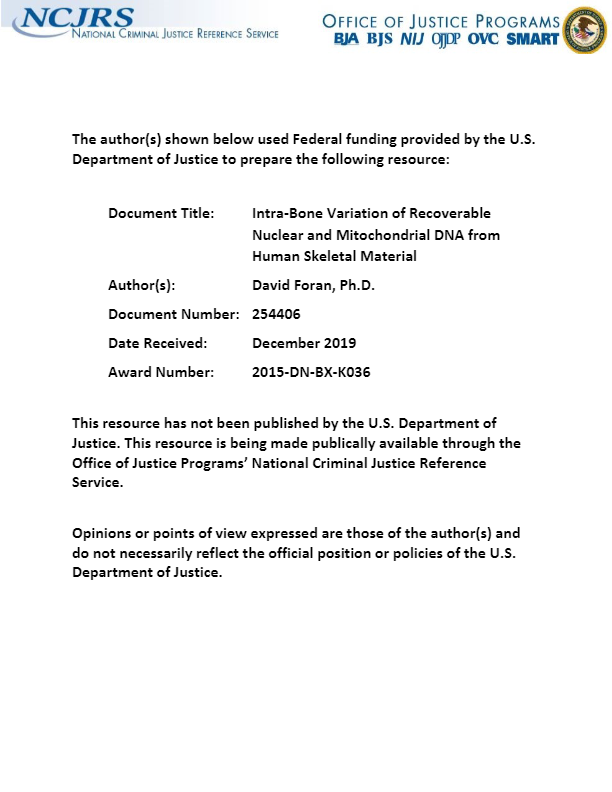
Intra-bone variation of recoverable nuclear and mitochondrial DNA from human skeletal material
Skeletal material often forms the basis of forensic investigation, given that it is among the most durable tissue in human remains. Forensic anthropologists’ analysis of osseous tissues can help determine the identification of the deceased, however anthropological identifications are often limited by the bone available for analysis, its condition, and a lack of individualizing characteristics or features that can be compared to ante-mortem records such as dental X-rays. In such instances genetic analyses of the skeletal remains may be indicated, as DNA identifications are both highly precise and can confer statistical certainty on the identification of an individual, which other forensic techniques cannot. Owing to this, DNA-based analyses of skeletal material has become the de rigueur method for human identification from skeletal remains that do not have a direct ante-mortem method for comparison.






